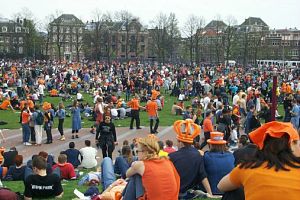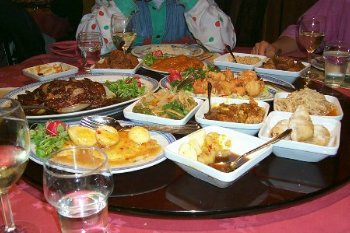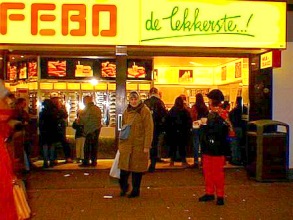| #1 – The Jordaan District | #2 – Anne Frank House & Museum |
| #3 – Westerkerk | #4 – Bloemenmarkt (floating flower market) |
| #5 – Main Police Station | #6 – Leidsestraat – shopping street |
| #7 – The Melkweg | #8 – Theater Bellevue |
| #9 – Stads Schouwberg – theater | #10 – American Hotel |
| #11 – The Leidseplein | #12 – The Paradiso |
Museums and Parks Map
| #1 – Rijksmuseum | #2 – The Vondel Park |
| #3 – Film Museum | #4 – Vincent Van Gogh Museum |
| #5 – Stedelijk Museum | #6 – American Consulate |
| #7 – Concertgebouw | #8 – Heineken Brewery Museum |
| #9 – Albert Cuyp Markt | #10 – Sarphati Park |
Amsterdam Map
Nieuwezijds Map
|
|
|
Red Light District Map
| #1 – Inner Harbor – Canal Boat Tours | #2 – Beurs van Berlage – Museum & Concert Hall |
| #3 – Oude Kerk – Museum & Exhibits | #4 – Dam Square War Memorial |
| #5 – Red Light District | #6 – Greenhouse Centrum |
| #7 Cannabis College and Hash Hemp Marijauna Museum and | #8 – Extase Coffee Shop |
| #9 – Nieuwmarkt | #10 – City Hall & Music Theater |
| #11 – Bluebird Coffee Shop | #12 – Waterlooplein – Open Air Shopping |
| #13 – Greenhouse Namaste | #14 – Jewish Historical Museum |
| #15 – Hortus Botanicus – Gardens |
Koninginnedag (Queen’s Day)

No, this isn’t a gay festival, it’s the celebration of the Queen of Holland’s birthday on April 30th. Her birthday actually falls on a different day, but who cares? This is the biggest party day of the year as the whole country wears orange, goes nuts and gets very drunk. They say two million people fill the streets of Amsterdam, making it impossible to get around. You’d be amazed to see what transpires. Amsterdam is one big party and the debris takes days for huge crews to clean up the ankle deep trash. Holland also turns into a big flea market as this is the one day of the year when every Dutchman, woman and child cleans out their junk and places it on the street for everyone to see and buy (hopefully). What a scene!
Guess what? They also celebrate Queen’s Day in Canada!
Where to Find Restaurants in Amsterdam
The largest concentration of restaurants in Amsterdam is around the Leidseplein. In the summer, almost all have outdoor seating. This is most enjoyable since you get to people watch, musicians come around to serenade you, and you can more easily avoid smokers (often a problem as few Dutch restaurants have non-smoking sections). Here there are streets leading away from the square with one restaurant after another. The competition is intense, and after you’ve spent ten minutes trying to decide which one to eat at, they all start looking the same. It’s a good idea to decide what type of food you want which will make choosing somewhat easier. You might want to decide based upon ambiance, but if you’re eating outdoors, they’re all equal.
The Leidseplein area has a number of well known restaurants including ‘t Swarte Schaep (The Black Sheep) with great food in a cozy 300 year old building (expensive). We found several very good, reliable Italian restaurants in the area, and some not so good Indian restaurants. The best clue as to how good the food is, is how long the line is!
Amsterdam’s Restaurant Scene
Dining in Amsterdam can range from fast food to world class cuisine. Dutch food tends to be very hardy but heavy and unimaginitive, relying upon meats, fish, foul and starches for main courses. Ethnic cuisine is much more varied, and centuries of immigrants have added their flavors to the available palate. Foremost among these is Indonesian Food, with the rice table a most elegant affair (photo).
 There are countless Indonesian restaurants in town serving up Gado Gado, satay, spicy sambals, crispy krupek, nasi goreng, etc. This is a real treat since only Indonesia has more authentic restaurants. You’ll find lots of Chinese restaurants in town, but be wary. If you’re used to real Chinese food or even Americanized Chinese, you might be disappointed because this is Chinese food, Indonesian style. Many people of Chinese decent have emigrated from Indonesia to Holland bringing their style of cooking. Fortunately there are a few real Chinese restaurants in Amsterdam. These are clustered in the Red Light District in Amsterdam’s Chinatown. You can spot these restaurants since they have cooked ducks hanging in the windows. Our favorite Chinese/Indonesian restaurant is the Oriental City (see photo), a two story restaurant with good views on the Oudezijdsvoorburgwal.
There are countless Indonesian restaurants in town serving up Gado Gado, satay, spicy sambals, crispy krupek, nasi goreng, etc. This is a real treat since only Indonesia has more authentic restaurants. You’ll find lots of Chinese restaurants in town, but be wary. If you’re used to real Chinese food or even Americanized Chinese, you might be disappointed because this is Chinese food, Indonesian style. Many people of Chinese decent have emigrated from Indonesia to Holland bringing their style of cooking. Fortunately there are a few real Chinese restaurants in Amsterdam. These are clustered in the Red Light District in Amsterdam’s Chinatown. You can spot these restaurants since they have cooked ducks hanging in the windows. Our favorite Chinese/Indonesian restaurant is the Oriental City (see photo), a two story restaurant with good views on the Oudezijdsvoorburgwal.
Fast Food
 Just like the old Horn and Hardart automats in New York, at the Febo, food is placed in little self-serve compartments. Good for fresh patat frites (french fries), but you’re taking your chances with anything else. Another popular fast food chain in Amsterdam is New York City Pizza. With a variety of toppings they’re OK for a fast snack, but be wary in off hours, sometimes the pizza can sit around for hours, and they have to reheat it which hardly adds to the flavor.
Just like the old Horn and Hardart automats in New York, at the Febo, food is placed in little self-serve compartments. Good for fresh patat frites (french fries), but you’re taking your chances with anything else. Another popular fast food chain in Amsterdam is New York City Pizza. With a variety of toppings they’re OK for a fast snack, but be wary in off hours, sometimes the pizza can sit around for hours, and they have to reheat it which hardly adds to the flavor.
If you have the time, it’s far better to get a really good pizza at an Italian restaurant for around $5-$7. The most popular fast food is pomme frites, or what we call french fries. This is the cheapest, freshest, fast food around and it’s usually excellent. They offer a variety of sauces to put on it, including mayonaise, curry and ketchup. However the best are the Belgian type which are usually bigger with even more sauces available. These shops are few and usually have long lines.
Another good inexpensive meal is at any of the Sworma or Falafel places. Vegetarians can fill up on Falafel, salads, hummous and more while the meat eaters pig out on lamb. The Dutch will often snack on broodjes, sandwiches on rolls with cheese, meat, fish or salad. They don’t quite measure up to american sandwiches (we put lots more stuff on ours), but they’re good in a pinch.
Tolerance
The famous Dutch tolerance goes back at least to the Prince of Orange who defeated the Spanish in 1576 and drove them out of Holland. The Spanish Inquisition left deep scars upon the Dutch psyche and the Prince was keen to undo years of intolerance and abuse at the hands of the Spanish. Thus he declared that Holland would thereafter be a place where people could live their lives according to their own conscience and not be forced into one system or another. This attitude has persisted despite the attempts of the French (under Napoleon) and the Germans in the World Wars to impose their will upon the Dutch.
In the 1600s, Holland attracted many jews, protestants and others who fled their homelands in France, Germany, even England to practice their religion amongst the tolerant Dutch who welcomed them. One such group of people from England eventually decided to leave Holland for the new world. They left Leiden and when their ship had problems they stopped in England and hopped aboard a ship called the Mayflower. They later became known as the Pilgrims who founded the Plymouth colony in America.
Today Holland is a rare refuge in a world of conformity and intolerance. Home of the World Court, Greenpeace and other international organizations, Holland prides itself on it’s freedoms and relative sanity. Many of today’s persecuted minorities have found a warm welcome in Holland. These include gays, drug activists, political activists, etc. Every year the gay pride day in Amsterdam includes a flotilla of gaily decorated boats full of scantily clad gay men and women glorying in all the attention.
Amsterdam was the site of the last Gay Olympics which filled the city to capacity with hundreds of thousands of gay people and spectators. Few cities can match Amsterdam as a magnet for gays with dozens of gay bars, clubs, coffeeshops, etc. Likewise those who have been persecuted due to their attitude and activities regarding marijuana and hashish have found Holland to be close to heaven. Not only is soft drug use tolerated, it is a very profitable, growing industry with over 1000 coffeeshops dispensing marijuana on a daily basis. Menus list the various Dutch grown marijuana and imported hashish available for sale. One can sit back at an outdoor table and roll a joint or smoke a bong while passersby including the police, smile. This is the true test of a tolerant society. If someone is engaged in an activity, in public that harms no one, then there is no crime, no criminal and no problem! We can all learn from the Dutch how to get along and prosper as an open society.
The biggest challenge the Dutch face concerning tolerance is the integration of various ethnic groups into their society. Indonesians, Surinamese, Turks, Moroccans and others have been victims of intolerance and even hate crimes. However it seems as long as the Dutch economy prospers, the social unrest and prejudice is minimal. Efforts have been made in recent years to undo decades of economic and social discrimination against minority groups in Holland.

